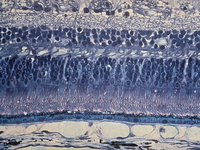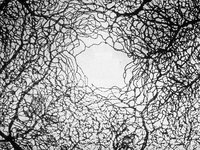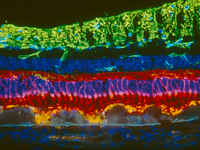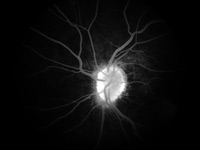Welcome to the Penn Medicine Center for Genetics of Complex Disease.
Our research was featured in the Philadelphia Inquirer! Read the article: "Why are Black people more likely to develop glaucoma? Penn scientists discovered new clues in the largest study of its kind."


Directed by Dr. Joan O’Brien, the Center seeks to elucidate the genetics of diseases that remain poorly understood in part due to gaps in population-level data, with an overall goal of developing personalized diagnostic and therapeutic strategies. Our initial research focuses on individuals with African ancestry. This ancestry group makes up only 2% of participants in genome-wide association studies (GWAS) as of 2019.1 This not only limits understanding of disease biology, but also impedes the translation of findings into clinical action for some populations.2
Dr. O’Brien recognized a health need in the familial eye disease of glaucoma, which is the leading cause of irreversible blindness worldwide.3 In 2014, she launched an ambitious study to elucidate the genetics of primary open-angle glaucoma (POAG) in African ancestry individuals,4 who are five times more frequently and 15 times more severely affected by glaucoma than European Americans.5,6 Today, the Primary Open-Angle African American Glaucoma Genetics (POAAGG) study has enrolled more than 10,250 individuals from Philadelphia, making it the largest African ancestry cohort enrolled in a single city.

The Center provides the resources needed to expand research efforts beyond glaucoma to other diseases with genetic components that remain poorly understood due to missing population-level data on certain ancestry groups. Areas of interest include hypertension, heart disease, stroke, sickle cell disease, liver disease, and sarcoidosis, all of which are prevalent in African ancestry populations. The Center continues to emphasize close partnerships formed with community members and leaders during the POAAGG study to address health needs, provide frequent disease screenings, and spread awareness of findings.

CENTER MISSION:
The Center aims to bring precision medicine approaches to enhance disease screening, develop individualized therapeutics, and improve health outcomes. More specifically, we have the following objectives at the Center:
- Identify and investigate regions of interest for glaucoma in African ancestry individuals.
- Elucidate the genetic architecture of other diseases that disproportionately affect African ancestry individuals.
- Translate genetic findings into personalized diagnostic and therapeutic strategies for glaucoma and other diseases in African ancestry populations.




Latest News
-
Why are Black people more likely to develop glaucoma? Penn scientists discovered new clues in the largest study of its kind.
Tuesday, March 26, 2024
Philadelphia Inquirer
- Glaucoma Genetics in African Ancestry Unveiled Thursday, January 18, 2024
- New risk genes for glaucoma identified in people of African ancestry Thursday, January 18, 2024


